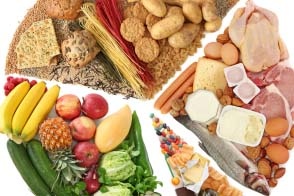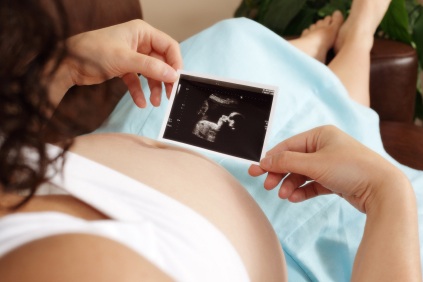You often hear the phrase ‘balanced diet’ and its advantages, particularly for pregnant mothers and growing children. What does this mean? It only means that you should have a good balance of body-building proteins, energy-giving carbohydrates and fats, enough of minerals like iron and calcium, and all the vitamins. You do not have to be a dietician to balance your diet.

Exactly What is a Balanced Diet? [( Excerpts from You and Your Child]
Even if one does not have milk, meat or fish but enough of dal, groundnut or some other nuts, there cannot be a deficiency of proteins in the diet. Vegetable proteins, however, are not of the same quality as those of meat, fish, egg or milk and it is advisable that the vegetarian diet include some milk and milk products.
Calories are a measure of energy. Energy is required for growth and activity. The energy value of foods is usually measured in calories, or more correctly, in kilocalories (Kcal). A baby needs 120 calories per kg of body weight per day. On an average a baby of one to two years needs 1000 calories daily. This is about half of what the mother eats. This, to many people, sounds incredible but is nonetheless true.
The bulk of the ordinary Indian diet presents a problem. An adult can consume four times the food as compared to a child of two years, though his needs are only double that of the child. So the baby needs to be fed more frequently, particularly when, in the second year, the quantity of milk is reduced and the major part of the diet consists of ordinary household food. Addition of a little butter, oil or ghee, increases the energy density and the child needs to eat less bulk.
After the age of one year, an approximation to the child’s energy needs can be made by adding 100 calories for every year of his life, e.g., a child of five years needs 1400 calories daily.
Protein is required for the growth and maintenance of the body. If sufficient calories are not consumed, proteins are diverted for the supply of energy rather than for body-building. Egg, milk, meat and fish are considered to the sources of good quality proteins.
Proteins of vegetable origin are not so well balanced, but by a judicious mixture of cereals and dal, the deficiency can be made up. The Indian meal pattern of dal and rice or dal and roti is a very sensible one. Addition of milk’s adds to the quality of proteins.
Legumes are a rich source of protein and contain as much as 20 to 25 percent protein. Soybean contains 40 percent protein. Cereals also contain protein, the content varying from seven percent in rice to about 12 percent in wheat. The rest fall in between. Oil seeds such as groundnut are also a rich source and because of the oil content, they are rich in calories as well.
While we need an adequate amount of protein for growth and health, the importance of proteins has been over stressed. There are all kinds of high protein foods and biscuits in the market and persuasive advertisements to go along with them.
It has to be remembered that if you are eating enough of the kind of food mentioned earlier, you are eating enough proteins and do not need any special protein-rich foods. A child on one year needs about 15 gms of protein which increases to 20 to 22 gms between four to six years and 40 gms to 45 gms between 10 to 12 years. During pregnancy the requirement of protein is about 55 gms and during lactation about 65 gms.
Fats are derived from animal or plant sources and supply nine calories per gram compared to four calories per gram of carbohydrates and proteins. Usually, affluent people have too much fat in their diet, while the less affluent do not have enough.
Calcium is required for the formation of bones and teeth so children need relatively more than adults. Milk is an excellent source; millet, bajra, rage and green vegetables like cholai, methi and drumstick leaves are also rich sources.

Exactly What is a Balanced Diet? [( Excerpts from You and Your Child]
Vitamins are essential for the maintenance of good health, but the belief that the more you take, the better you feel, is not true. In many homes, there is an array of bottles on the breakfast table and everyone swallows the tablets as a ritual. Large doses of vitamins A and D can be dangerous as these vitamins are stored in the body. Excess of vitamins B and C is excreted in the urine – so you are producing an expensive vitaminised urine and, or course, enriching the pockets of the drug manufacturers.
Vitamin A is needed for healthy eyes. It is present in fish liver oils, like cod and shark, and in milk, egg, butter and ghee. Green vegetables as well as carrot are rich in vitamin A and about 50 gms of vegetables a day will provide and adequate quantity of this vitamin. Fruits like mango, papaya and apricot are also rich sources.
Vitamin B is present in milk, egg, liver and green leafy vegetables.
Vitamin C is found in fresh fruits and vegetables. Guava is particularly rich. Other rich sources are orange, lemon and tomato. Amla is the richest source, but is an astringent and difficult to eat. Germinating pulses are also rich in these vitamins. You can see how important green vegetables are because they supply iron, calcium and vitamins.
Vitamin D is needed for healthy bones and for protection against rickets. It is inadequate in all foods. Small amounts are found in liver, egg yolk and milk. However, vitamin D is formed in the body by the action of sunlight on the skin. It is very important for children to play in the sun.










